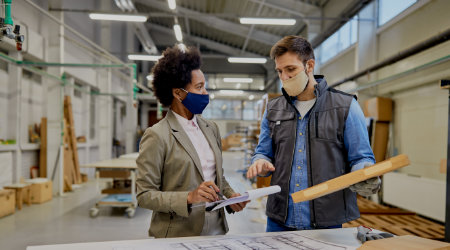
Do Air Purifiers Really Protect Building Occupants from COVID-19?
July 9, 2021
Return to the office is in full swing and so are claims of “miracle prevention” techniques against COVID-19. One product in particular is being touted everywhere from commercials during baseball games to ads all over the internet to multiple emails everyday in my inbox as the best defense against COVID-19 in the commercial office. That product? Air purifiers, or air cleaners, as some call them.. But are air purifiers really effective in protecting occupants from COVID-19?
The short answer is yes. But with caveats. According to the Environmental Protection Agency, an air cleaner must be able to remove airborne particles that are 0.1 to 1.0 microns – the coronavirus is itself 0.1 microns but travels in particles up to 1.0 microns. But it’s important to cut through some of the marketing rhetoric on products to determine whether a particular product is actually meeting this standard. Look for air cleaners with a Clean Air Delivery Rate (CADR) rating or those that use High Efficiency Particulate Air (HEPA) filters, and be sure to right size an air cleaner for the particular size space you’re using it.
EPA also cautions that “air cleaning or filtration by itself is not enough to protect people from COVID-19.” These strategies must still be used in conjunction with other prevention and mitigation techniques, such as increased ventilation rates, high-MERV-rated HVAC filters, or simply just opening windows, if possible. According to EPA, “Air cleaning may be useful when used along with source control and ventilation, but it is not a substitute for either method.”
The Centers for Disease Control's guidance regarding air purifiers is included on its updated Ventilation in Buildings page.
This post was submitted by Greg Zimmerman, deputy editor, Facility Group.
Next
Read next on FacilitiesNet












